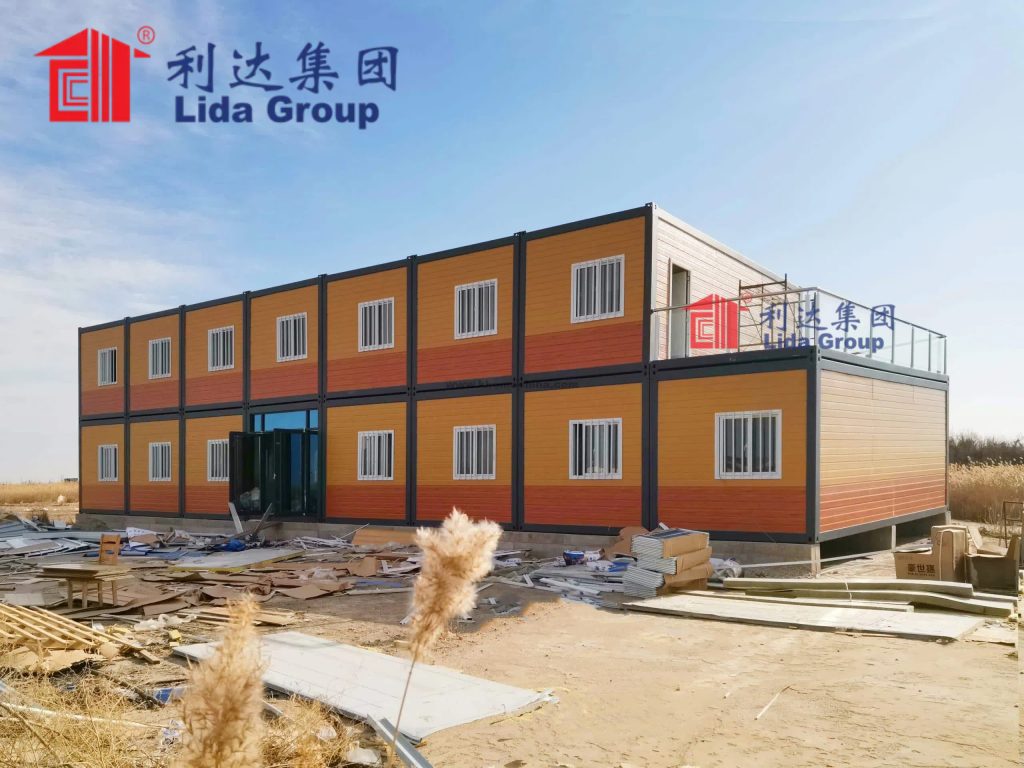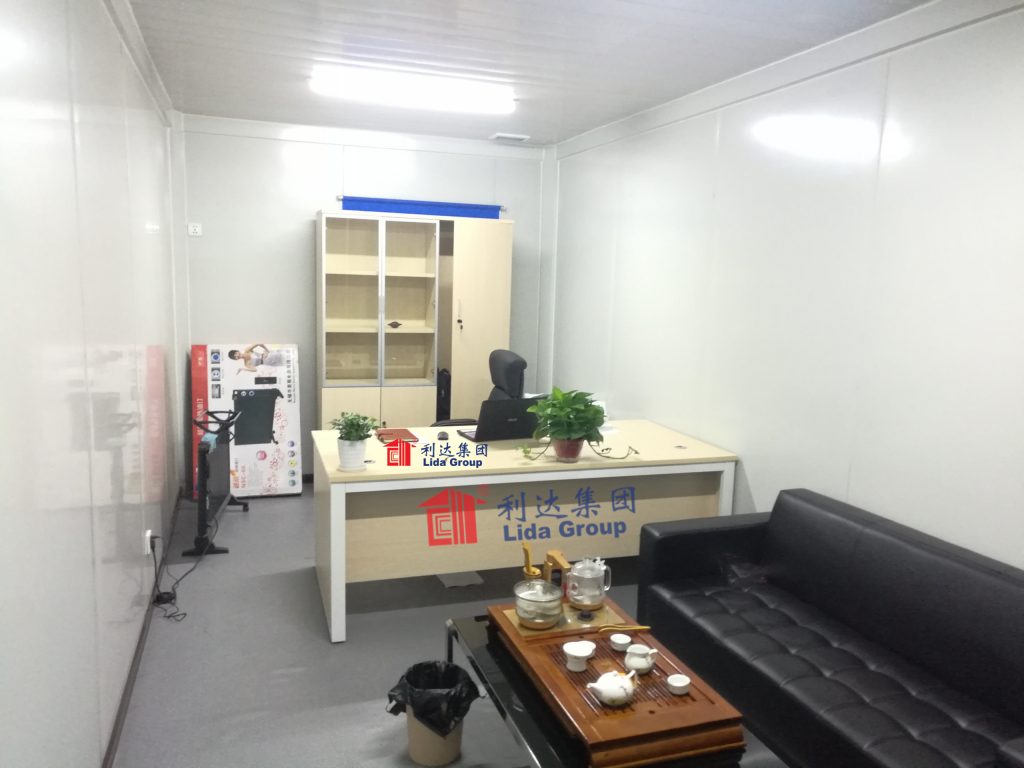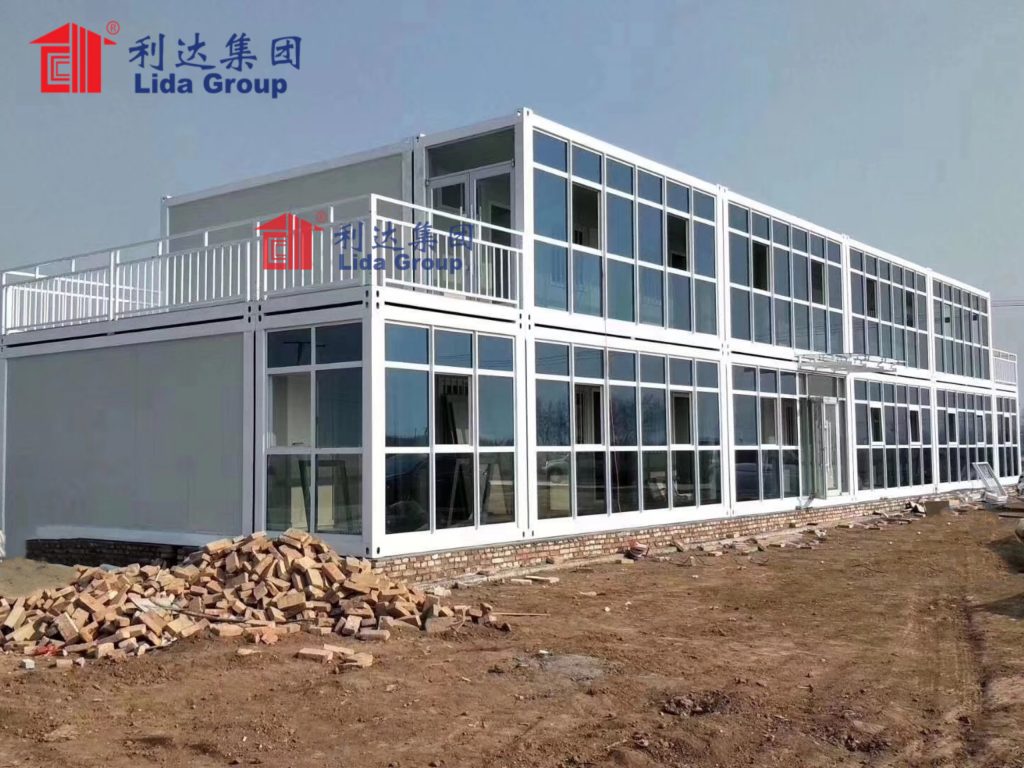As population growth and urbanization increase worldwide, providing quality education access poses tremendous challenges for infrastructure planners. Conventional classroom construction falls behind accelerating demand through lengthy design/approval processes and seasonal site work limitations. Prefabricated modular buildings offer faster scalability but traditional lifting/craning still hampers dense urban installations. Seeking smarter logistics, engineers collaborated with global prefab leader Lida Group to develop new rail-mounted assembly for swiftly producing and installing entire containerized schools on congested city footprints.
Prefabricated modular construction utilizing containerized classrooms has gained recognition as a viable solution for rapidly expanding education capacity. Lida Group pioneered standardized containerized classroom models optimized for global intermodal shipping and on-site integration. Leveraging containerized infrastructure eliminates foundation requirements while modular wall, floor and ceiling cassettes interface like Lego bricks for swift assembly by unskilled laborers. Still, existing field assembly workflows involving mobile cranes and heavy equipment restricted installations to greenfield sites away from infrastructure. New methods were needed to deploy prefab classrooms within tight urban neighborhoods.

Through research partnerships, joint engineers devised adapting linear gantry cranes commonly used in automotive production for prefab modular building. Standardized rail infrastructure would guide motion of specialized Mobile Erection Transport (MET) vehicles to efficiently navigate challenging city sites like alleyways and narrow lots impossible for conventional cranes. Each MET carries all materials and tools to complete one classroom module at a time following rail paths. Custom bracketing securely mounts modular components during transit and precision robotic arms manipulate lightweight parts with millimeter accuracy.
To test feasibility, a full-scale rail assembly line prototype launched within a disused factory space. Engineers worked alongside skilled Lida technicians to refine workflows using rail-guided METs carrying full-sized classroom cassettes. Floor trenches precisely embedded steel rail infrastructure optimized for repetition across various densities and layouts. Programmable transport sequencing choreographed intricate assembly dance sequences with millisecond synchronization. Within weeks, entire multi-room schools materialized along the modular production line surpassing any hand assembly efficiency. All preliminary engineering hurdles to automate prefab workflows seemed solvable.
Next, a full-scale mobility demonstration validated rail-guided installations could deploy classrooms through any neighborhood. On-site engineers embedded rail routes along tight back alleys and within narrow schoolyards once deemed impossible for construction access. Under remote control the nimble MET carriers easily maneuvered modular loads while staying well clear of overhead lines and structures only inches away. Within hours entire schools assembled into place without disturbing adjacent properties, a process taking months under conventional site construction programs. This confirmed prefab classrooms could scale access even within densest urban environments where land rarely existed otherwise.

Finally, to prove long-term sustainability an initial rail-guided production facility went live on former industrial lands within a congested city center. Continuous steel rails precisely laid out like track circuits choreographed transport of chassis-mounted modular components through automated assembly sequencing. Meanwhile containerized utility cabins integrated robust power, communications, HVAC and other building systems again guided by rail for swift couplings. Stationed production laborers and robots in harmony transformed stacks of flat-pack materials into complete turnkey schools just-in-time for mixed-use neighborhood buildouts.
From raw materials to street delivery now takes under 4 weeks, 4 times faster than traditional methods. Capacity scales in lockstep with demand as additional parallel assembly lines activate modular building towards a 24/7 nonstop rate. Standardized components maximize repetition while carefully packaged rail infrastructure installs within tight envelopes minimizing foundations. Robot arms precisely manipulate lightweight cassettes maintaining ergonomic working conditions even for full buildings. Prefab is simplified into an industrial lean process optimized for reliability and scale.
Since commissioning over 50 neighborhood schools rapidly materialized, seamlessly weaving educational hubs into regenerating cityscapes. Assembly line replication now dispatches entire K-12 campuses direct from factory footprints within months versus institutional years under conventional means. Benefits extend far beyond expedited project schedules. Capital locked in land and materials instead activates rapidly through automated workflows. Community revitalization no longer pauses awaiting lengthy builds. Modular design ensures flexible long term adaptability as enrollment fluctuates versus fixed structures.

Rail-mounted prefabrication has proven itself a game-changing model for sustainably scaling education facilities in pace with rising urban population demands. Modular building at last accesses previously infeasible city sites through automated mobility. Productivity increases exponentially over manual field assembly. Most importantly, thousands of students now attend modern 21st century schools nourished by this logistical innovation that streamlines modular construction processes once beyond reach. Prefab’s unlimited potential emerges through interconnected multi-disciplinary solutions optimizing every facet of design, production and installation.
In summary, collaborative engineering developed an automated rail-mounted assembly system unlocking untapped scalability for Lida Group’s prefab containerized classrooms. Specialized Mobile Erection Transport vehicles precisely maneuver modules along embedded steel rail infrastructure with millimeter accuracy navigating even tightest urban plots. Continuous production lines choreograph just-in-time component transport transforming stacks of flatpacked materials into complete schools within 4 weeks. Robotic assistance maximizes ergonomic workflows. Most significantly, entire neighborhoods now weave educational campuses seamlessly into regeneration timelines through expedited modular builds. Streamlined automation empowers prefabrication to fully realize its vision of sustainably scaling community infrastructure to unprecedented horizons through interconnected multi-disciplinary innovations.

Related news
-
Developing nation imports prefab shelter kits from Lida Group incorporating flat-packed insulation panels for quick setup of cyclone evacuation centers.
2024-09-18 09:12:55
-
Contractors praise speed and budget of projects using Lida Group's panelized structural steel building systems for rural commercial and institutional developments.
2024-09-13 11:47:46
-
Researchers test steel structural building designs from Lida Group in all climates for strength, durability and cost-effectiveness in construction of remote research stations.
2024-09-13 13:52:43
contact us
- Tel: +86-532-88966982
- Whatsapp: +86-13793209022
- E-mail: sales@lidajituan.com


